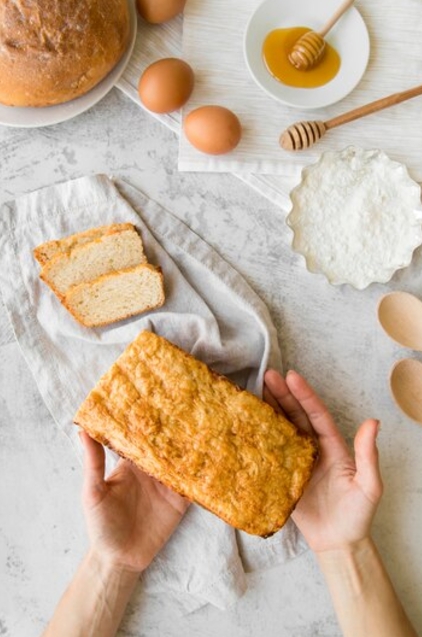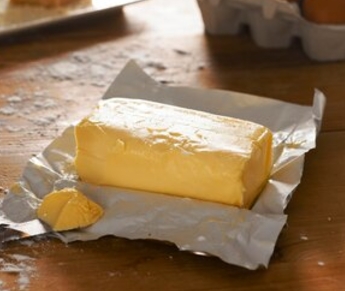A classic dessert, pound cake has a deep, velvety crumb and a buttery richness. This classic confection was first made using a straightforward recipe that called for one pound of flour, sugar, butter, and eggs. It has endured over the years. Because of its adaptability, it can be served with fresh fruit and cream, as is, or topped with a glaze. Pound cake is always a hit whether you’re having a tea party or just in the mood for a hearty snack.
What You Can Learn From This Recipe?
In order to get the perfect cake texture, this recipe emphasizes the value of exact measurements and methods like creaming sugar and butter. Additionally, you’ll discover how to keep baked foods from becoming dry.
What I Love About This Recipe
I adore how pound cake perfectly combines decadence and simplicity in a single bite. It is a decadent and nostalgic delight because of its rich, buttery flavor and dense, moist texture.
What’s the Best Way to Store Leftovers?
Remaining pound cake can be kept at room temperature for up to four days in an airtight container or wrapped securely in plastic wrap. Freeze each slice separately and defrost as needed for extended storage.
What to Serve With It?
A dollop of vanilla ice cream, a spray of chocolate sauce, or whipped cream and fresh berries all go well with pound cake. It tastes great with a nice cup of coffee or tea as well.
Pound Cake: A Classic Delight
Description
A treasured classic, pound cake has endured over time because to its straightforward yet decadent ingredients. A pound of flour, butter, sugar, and eggs are traditionally used to make this cake, which has a velvety crumb and a rich, moist feel. Pound cake is a common dessert in kitchens all over the world because of its versatility, which allows it to be eaten simple, topped with fresh fruit, or drizzled with glaze. A recipe that every baker should learn, it's perfect for parties, afternoon teas, or a cozy handmade treat.
Classic Pound Cake
Instructions
Making the Pound Cake
-
Preheat the Oven:
- Preheat your oven to 350°F (175°C).
- Grease and flour a loaf pan or line it with parchment paper to make removal easier.
-
Cream Butter and Sugar:
- In a large bowl, beat the butter and sugar together until they are light and fluffy.
- This step is key to creating a moist and airy cake.
-
Add Eggs and Vanilla:
- Add the eggs one at a time, making sure each one is fully mixed in before adding the next.
- Stir in the vanilla extract.
-
Mix Dry Ingredients:
- Mix the dry ingredients by whisking the flour and salt together in another bowl. Gradually add this to the wet mixture, alternating with milk, beginning and ending with the flour mixture.
- Mix just until combined; avoid overmixing.
-
Pour and Bake:
- Pour the batter into the prepared loaf pan and smooth the top with a spatula.
- Bake for 55–65 minutes, or until a toothpick inserted in the center comes out clean.
-
Cool and Serve:
- Allow the cake to cool in the pan for 10 minutes before transferring it to a wire rack to cool completely.
- Slice and serve as desired.
Nutrition Facts
Servings 12
- Amount Per Serving
- Calories 310kcal
- % Daily Value *
- Total Fat 16g25%
- Saturated Fat 10g50%
- Cholesterol 95mg32%
- Sodium 100mg5%
- Potassium 60mg2%
- Total Carbohydrate 38g13%
- Sugars 25g
- Protein 4g8%
* Percent Daily Values are based on a 2,000 calorie diet. Your daily value may be higher or lower depending on your calorie needs.
Note
- Ensure all ingredients are at room temperature for the best results.
- For a citrus twist, add the zest of one lemon or orange to the batter.
Journey of Pound Cake: A Sweet Legacy Across Centuries
Despite being one of the most straightforward and sophisticated desserts in the baking world, pound cake has a very interesting history. Its earliest recipe, which calls for a pound of butter, sugar, eggs, and flour, is reflected in its name, which originated in Northern Europe. Even in the pre-modern era, when cooking tools were simple and recipes were passed down orally, this simple ratio guaranteed reliable results.
Pound cake saw delightful alterations as it journeyed across continents. It was renamed quatre-quarts (four quarters) in France, using the same ratios but frequently adding flavorings like citrus zest or rum. In the American South, on the other hand, it developed into a decadent dessert that was served during festivities and holidays. To make variants with more moisture, bakers would add cream cheese or sour cream.
Pound cake's adaptability is one factor contributing to its ongoing appeal. Because of its firm structure, it's the ideal foundation for toppings like icings, glazes, and fruit compotes. Additionally, its delicate sweetness goes nicely with tea, coffee, or a glass of milk, making it a favorite among people of all ages.
Pound cake is a nostalgic dessert that appeals to all ages today. Its simplicity encourages experimentation by bakers of various abilities, whether they choose to infuse it with liqueurs, cover it with chocolate, or add unusual spices. Every variation allows for creativity while retaining a feeling of history.
We appreciate your exploration into pound cake's delectable trip!






